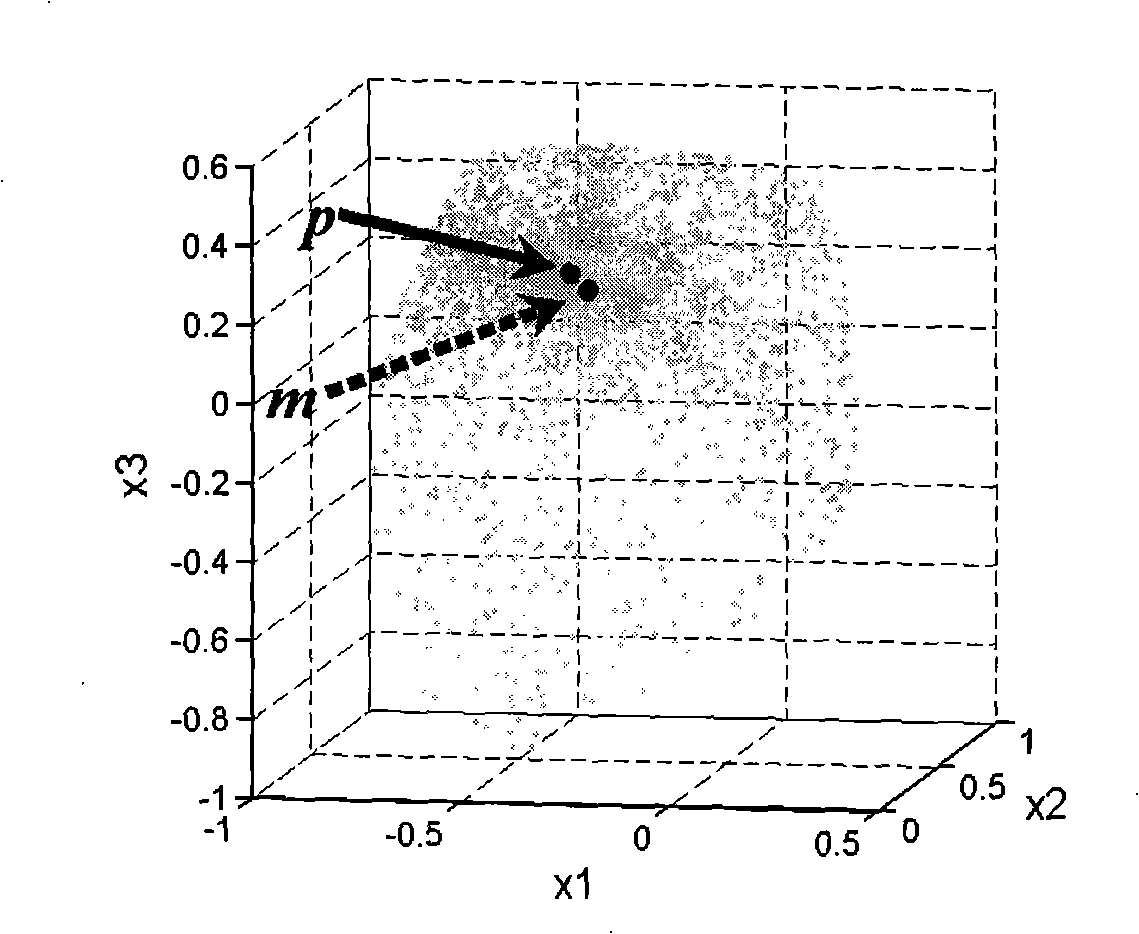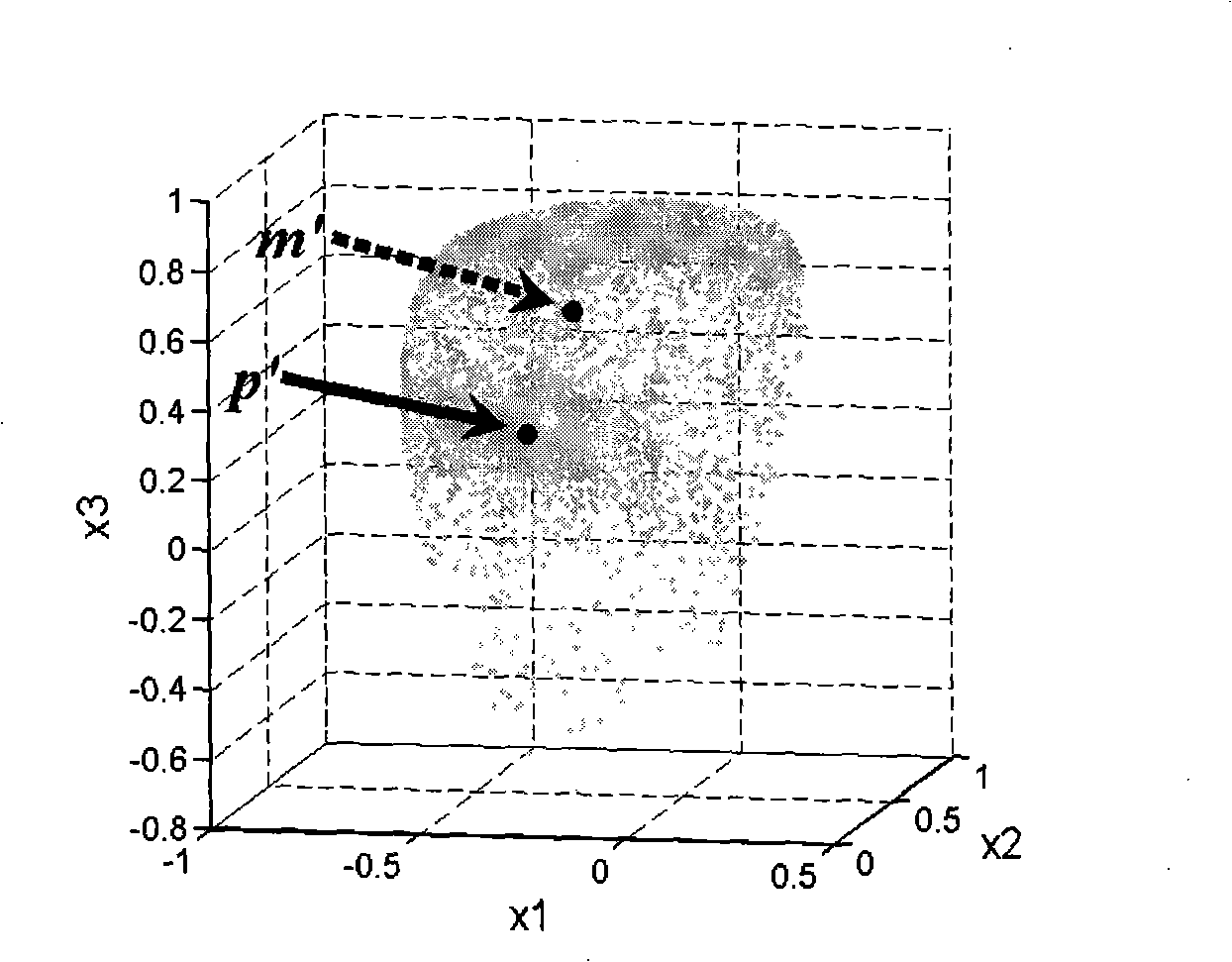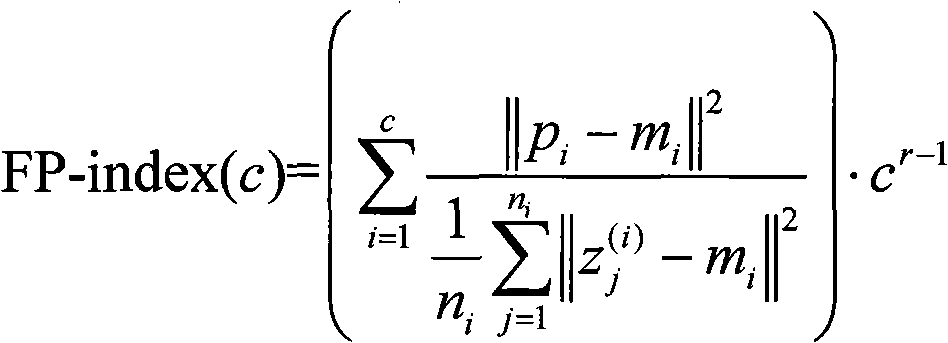Mixing matrix estimation method for unknown number blind separation of sparse sources
A technology of aliasing matrix and blind source separation, applied in computing, computer parts, instruments, etc., can solve problems such as poor estimation accuracy
- Summary
- Abstract
- Description
- Claims
- Application Information
AI Technical Summary
Problems solved by technology
Method used
Image
Examples
specific Embodiment approach 1
[0048] The specific process of the aliasing matrix estimation method for blind separation of unknown number of sparse sources described in this embodiment is as follows:
[0049] Step A, remove the observation data points in the observation signal whose absolute value is less than a predetermined threshold; the observation signal has better sparsity in the time domain;
[0050] Step B, project the remaining observation data points onto the upper half unit hypersphere, and obtain the data set after the observation data points are projected onto the upper half unit hypersphere as Z={z j |j=1, 2,..., L}, where z j is an M-dimensional vector, L is the number of data points;
[0051] Step C, estimate the number of source signals, and obtain the aliasing matrix, the specific process is:
[0052] Step C1. Set the number of source signals as c, and the upper limit of its possible values is c max , select the initial value of the source signal number c as 2;
[0053] Step C2, tak...
PUM
 Login to View More
Login to View More Abstract
Description
Claims
Application Information
 Login to View More
Login to View More - R&D
- Intellectual Property
- Life Sciences
- Materials
- Tech Scout
- Unparalleled Data Quality
- Higher Quality Content
- 60% Fewer Hallucinations
Browse by: Latest US Patents, China's latest patents, Technical Efficacy Thesaurus, Application Domain, Technology Topic, Popular Technical Reports.
© 2025 PatSnap. All rights reserved.Legal|Privacy policy|Modern Slavery Act Transparency Statement|Sitemap|About US| Contact US: help@patsnap.com



